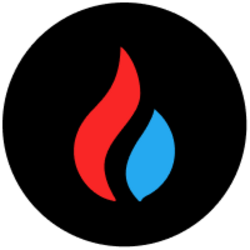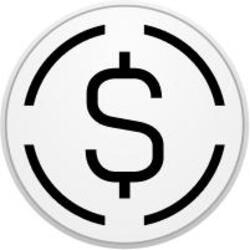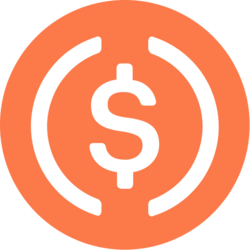U.S. producer prices rose less than expected in December as higher costs of goods were partially offset by stable prices for services, suggesting inflation remained on a downward trend after that progress has stalled in recent months.
The moderation in producer inflation reported by the Labor Department on Tuesday did not change the view that the Federal Reserve would not cut interest rates again before the second half of this year amid labor market resilience and the threat of potentially inflationary tariffs on imported goods by the incoming administration of President-elect Donald Trump.
“Better than expected is not necessarily what the Fed wants to see before easing monetary conditions in a fast-growing economy, with tariffs and tax cuts on the incoming administration’s agenda,” said Carl Weinberg, chief U.S. economist. United States of High Frequency Economics.
The producer price index for final demand rose 0.2% last month after an unrevised 0.4% gain in November, the Labor Department’s Bureau of Labor Statistics reported. Economists polled by Reuters had forecast the PPI would rise 0.3%.
In the 12 months through December, the PPI accelerated 3.3%, the highest since February 2023, after rising 3.0% in November. The increase in the year-on-year rate reflected lower prices last year, especially for energy products, which were not taken into account. Inflation rose 3.3% in 2024 after rising 1.1% in 2023.
The producer price index (PPI), which excludes food, energy and trade, rose 0.1% for the second consecutive month. The core PPI increased 3.3% year-on-year after advancing 3.5% in November. Some economists cautioned against drawing too many conclusions from the benign rise in the monthly PPI, arguing that producer prices tended to be lower in December.
US inflation forecast
They did not expect the subdued reading to extend to December consumer price data due on Wednesday. A Reuters poll forecast consumer prices would rise 0.3%, matching November’s increase.
“Today’s CPI numbers should offer no comfort to tomorrow’s CPI release,” said Stephen Stanley, chief U.S. economist at Santander US Capital Markets. The lack of progress in reducing inflation to the US central bank’s 2% target, a resilient economy and uncertainty about the impact of the Trump administration’s policies, including tax cuts and mass deportations of undocumented immigrants, led the Fed to project a path of shallower rate cuts this year.
Last week, the government reported a sharp rise in nonfarm payrolls in December and a decline in the unemployment rate, leading economists to expect the U.S. central bank to keep rates unchanged through June.
Bank of America Securities now believes the Federal Reserve’s easing cycle is over. Goldman Sachs expects two rate cuts this year, in June and December, a figure revised down from three. The central bank began its easing cycle in September and reduced its benchmark overnight interest rate by 100 basis points to the current range of 4.50% – 4.75%. The last reduction came in December, when authorities also projected two cuts of rates this year instead of the four they had predicted in September.
Wholesale food prices fall
Stocks on Wall Street were trading mostly lower. US Treasury yields fell and the dollar depreciated against a basket of currencies.
Wholesale goods prices rose 0.6% in December, after soaring 0.7% in the previous month. They were boosted by a 3.5% increase in energy product prices, with a 9.7% increase in gasoline.
However, food prices fell 0.1% after accelerating 2.9% in November. Wholesale egg prices rose 0.5% after rising 55.6% in November amid a bird flu outbreak. Excluding the volatile components of food and energy, goods prices were unchanged for the first time since March, following a 0.2% increase in so-called basic goods in November.
Prices for services remained stable after an increase of 0.3% in November. Prices for transportation and storage services increased by 2.2%, and the cost of airfares soared by 7.2%. Portfolio management fees rose 0.2%, but the cost of hotel and motel rooms fell 6.9% after declining 1.2% in November.
Don’t miss: This is how Warren Buffett’s Berkshire Hathaway operates the most polluting group of coal plants in the US
Health care costs were mostly benign, with a 0.2% increase in health care prices. The cost of inpatient hospital care did not change, while the cost of dental care increased 0.1%. Portfolio management fees, healthcare, hotel and motel accommodations, and airfares are among the components that go into the calculation of the personal consumption expenditure (PCE) price index, excluding food and energy .
Based on IPP data, economists estimated that the personal consumption price index (PCE), excluding food and energy, rose 0.2% in December. The so-called PCE core inflation rose slightly by 0.1% in November. In the 12 months to December, core inflation is forecast to advance 2.9% after rising 2.8% for two consecutive months.
Those estimates could change following the release of consumer price data. PCE core inflation is one of the measures that the Fed follows for monetary policy.
“The risks are of smaller cuts… but we hope that continued progress on the inflation front can keep the Fed on track to implement a rate cut at the March meeting,” said Matthew Martin, US economist at Oxford Economics.
With information from Reuters.
Follow us on Google News to always stay informed
Follow the information on the economy and finances in our specialized section












































